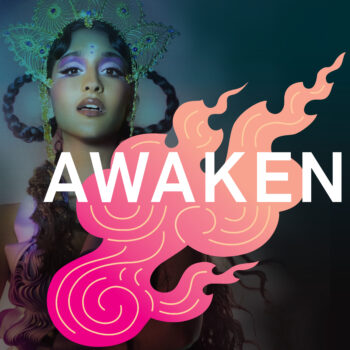
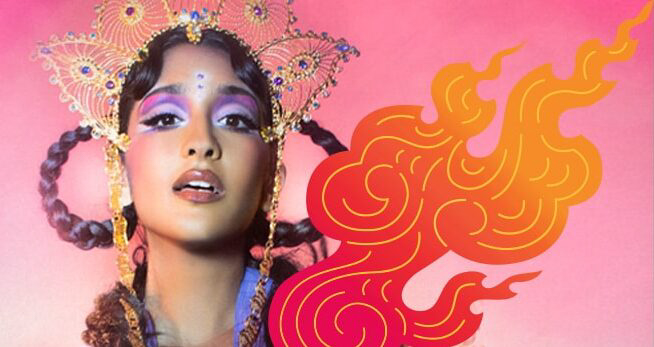

From a psychological perspective, attachment is vital to the mental well-being of a developing human. But from the Buddhist viewpoint, attachment is the mind state that trips us up constantly. It’s the one that pulls us out of the present and into a state of longing for an imagined future or clinging to the past, leaving us with nothing but dissatisfaction. But what if we could release our grip and truly be in the moment?
RUTH OZEKI:
The emotional felt sense of our attachment to objects, to people, to ideas, to notions of the self, to the conditions of our life and to life itself, right? And that attachment is extremely powerful. From there, my mind drifts to thinking about my dad’s last days before he died, and I was taking care of him.
RAVEENA AURORA:
Author and Zen priest, Ruth Ozeki.
RUTH OZEKI:
Of course, I was very attached to him, but what was really so painful was watching his passionate attachment to his life just at the point where he was leaving it. That was something I’ll never forget.
RAVEENA AURORA:
Welcome to Awaken, a podcast from the Rubin Museum of Art that uses art to explore the dynamic path to enlightenment and what it means to “wake up.” I’m singer and songwriter Raveena Aurora and I’ve been learning about the transformative power of art throughout my life.
Since time immemorial, art has been used as a portal to better understand ourselves and the world around us. At the Rubin, a museum dedicated to art from the Himalayas, we believe art can inspire us on a path to awakening. And in this series, we’re using a specific artwork, the mandala, to explore this journey and the emotions that accompany us on the way.
But what is a mandala? A mandala is a guide. People from many cultures and religious traditions around the world use mandalas as a map to navigate their inner lives, including their emotions. Throughout this series, with the guidance of scientists, Buddhist teachers, writers, artists, and activists, we wrestle with five challenging emotions””anger, pride, attachment, envy, and ignorance””to help us take a new perspective on how emotions can influence our day-to-day experiences”¦and what they might be able to teach us if we get curious.
In this episode: attachment.
Psychologist Tracy Dennis-Tiwary is a professor of psychology and neuroscience at Hunter College, CUNY.
TRACY DENNIS-TIWARY:
What I would think of attachment as being is an evolutionarily primed motive. It’s a crucial and necessary aspect of our social evolution. And when I think attachment, I start with early child caregiver attachment. So I think about this bond that very naturally and automatically will form between a primary caregiver and any caregiver and a child.
RAVEENA AURORA:
Dzogchen Ponlop Rinpoche is a leading Buddhist teacher and one of the foremost scholars and meditation masters in the Nyingma and Kagyu schools of Tibetan Buddhism.
DZOGCHEN PONLOP RINPOCHE:
So this emotion of desire or passion, as you mentioned, actually it really can be a very positive one. A positive one. And I’ve learned this also from having a child, that they talk about psychologically that it’s important for a child to develop this attachment, right? So I truly see that.
RAVEENA AURORA:
Mark Epstein is a Buddhist and Freudian psychiatrist. His most recent book is The Zen of Therapy Uncovering a Hidden Kindness in Life.
MARK EPSTEIN:
Attachment describes what happens for an infant and young child as they develop relationships with significant others.
TRACY DENNIS-TIWARY:
And in psychology, we often actually characterize that attachment as secure or insecure. And we do that based on a couple ideas. One is that we have an idea that this early relationship that we have with a caregiver, it creates what’s called an internal working model or set of expectations that we apply to the whole world in how we approach other relationships. And so this internal working model is based on experience. It’s based on the repeated experience that when you have a need that your caregiver is predictable or not, that they will help you meet your needs or not, that you can explore out into the world but then come back to your caregiver as a sort of a safe base.
And when you believe that the people in your life who care for you are predictable, reliable, and can be a safe base from which you can go out and explore the world and then come back, you tend to develop what we call a secure attachment.
MARK EPSTEIN:
So, a healthy attachment means that the relationship is a good one, and that difficult emotions that arise in all of our relationships can be understood and tolerated and made use of.
TRACY DENNIS-TIWARY:
And there are emotional aspects to attachment. There are those warm feelings between a caregiver. There’s the distress when you’re separated from your caregiver, but there’s also the ability to repair that distress. So there’s this emotion regulation component to a secure attachment whereby you are separated from your caregiver, especially we’re talking now about young children and you have distress, but you can manage it. And when your caregiver comes back, it’s a source of comfort for you. So there’s this bond that’s formed on a behavioral level, emotional level, on a thinking cognitive level.
DZOGCHEN PONLOP RINPOCHE:
So it’s unavoidable. [laughs] It’s part of our kind of genes, so to speak. It’s a genetic emotion.
TRACY DENNIS-TIWARY:
And you can also have an insecure attachment however as you can imagine where the expectations and experience with that caregiver is that they are perhaps unreliable. Perhaps they are even punishing, perhaps they are reliably distant from you. So there are all these different kinds of experiences of emotional availability, of reliability and whether you can use them as sort of a social resource. That can also direct you towards having a more insecure attachment and therefore expectations about the world that mirror what your experience was.
MARK EPSTEIN:
When there’s attachment that doesn’t go well””anxious attachment, or trauma around attachment; that’s called developmental or relational trauma””then attachment is frustrated, and not secure, and then people develop a lot of trouble with their emotional life.
TRACY DENNIS-TIWARY:
Now, that doesn’t mean that attachment style as we call it is set in concrete is set in stone. But it does mean that, from the perspective of psychology, these early relationships help us form expectations and goals around other relationships we have in the world, whether those are friends, other family members, or romantic partners. Now that’s different from how religious traditions talk about attachment, but that’s the psychological perspective.
RAVEENA AURORA:
From the Buddhist perspective, attachment has a different meaning and connotation.
MARK EPSTEIN:
The Buddhist thing about attachment is really about craving or about thirst or about clinging sometimes.
DZOGCHEN PONLOP RINPOCHE:
The flip side of the attachment or desire or passion is that there is this sense of””there’s this sense of obsession, an obsessive quality of mind. It goes into this state where there’s no limit.
No limit of how much we have or what we get. We want more and more and more. And so the flip side of this desire sometimes develops this quality of what we call poverty mentality. No matter how much you have, you still want more, or you feel you need more. And so, therefore, it becomes quite negative, from that perspective.
MARK EPSTEIN:
That was the Buddha’s actual first noble truth, about dukkha. That usually is translated as suffering, but I think a better translation is unsatisfactoriness, that there’s a sense of unsatisfactoriness that comes through even pleasant, even pleasurable experiences.
It’s tinged, it’s got this shadow, like not enough. So, how do we learn to stay with that without rejecting it? And that’s what the teachings of mindfulness””not clinging to the pleasant, not pushing away the unpleasant, or if there’s something slightly perverse, not clinging to the unpleasant and pushing away the pleasant. But, how do you just stay with the entire range of your experience?
SHARON SALZBERG:
One of the things I used to do to try to help me have a better sense was, whenever I was using the word attachment, I’d replace it with “control” because that’s what it I think means.
RAVEENA AURORA:
Buddhist teacher and author Sharon Salzberg.
SHARON SALZBERG:
It can have different senses also. Like, there’s craving, which is kind of an incessant wanting, never feeling you have enough or you are enough, and that too is problematic because it’s endless. There’s no final new gadget that’s going to make you not feel that, if that’s what you’re perpetuating. And so that’s suffering for that reason. And then there’s clinging, which is, “I’m attached to you being a certain way.” It’s like control.
MARK EPSTEIN:
There’s a famous book by Anne Carson called Eros the Bittersweet, that she took from Sappho, from the ancient Greeks. She’s a poet but a Greek scholar. It’s about eros or desire, the bittersweet. But she says the Greek word is actually “sweet bitter” because the sweetness comes first and then, “Oh, it’s not quite what I wanted. It doesn’t last as long as I wish it did.” So then the bitterness comes in at the end.
RAVEENA AURORA:
And therein lies the challenge and contradiction of attachment. You want this thing, and you often get it, but it might never be exactly as you wanted it. There’s a sense of longing for more. So it’s sweet to have this wonderful experience and bitter to want more of it. Novelist and Zen priest Ruth Ozeki has explored ideas around attachment through her work.
RUTH OZEKI:
Speaking in a Buddhist context here, of course, one direction is towards the Buddhist idea of attachment as a root cause of suffering. And as such, attachment is something that is undesirable. We want to rid ourselves of this.
RAVEENA AURORA:
Again, Sharon.
SHARON SALZBERG:
So it’s not even like the Buddha said attachment was bad or wrong or terrible. He said, “It’s the root of suffering.” And we can see it. It means you’re in defiance of the truth of change. You’re trying to assume control over something or someone you can never control. You’re not allowing yourself to enjoy whatever is, because you’re so freaked out about it ever leaving you or changing or how you can get more of it or whatever, that you’re in some other place, so you’re not even being fulfilled by the delightful circumstance or person or experience. It’s a mess!
TRACY DENNIS-TIWARY:
It’s sort of a social captivity or an emotional captivity that these things and people and objects that we are creating the separation between ourselves and the rest of the universe, in a way that keeps us locked in notions that cause a lot of suffering. Notions of I and you. Notions of mine and yours. And so I think attachment is this very complementary notion in spiritual traditions, complementary to the psychological notion.
MARK EPSTEIN:
The other foundational teaching of Buddhism is that everything is interconnected, and that we don’t exist as the isolated person that we think we are. That in fact, we are deeply attached, we are inextricably attached to each other and to the world. We can’t pull ourselves out of the world; that’s the revelation. So how do you reconcile that with a sort of superficial teaching that we need to be free of attachment? I think the Buddhist teaching about attachment is more instinctively we want things to be more secure, more absolute, more under our control, than they possibly can be, so that there’s always a gap between what we wish for and what we have, and that we somehow have to learn how to work with that gap.
Whether it’s reconcile ourselves to it, or comes to terms with it, work through it, or””I think it’s more allowing ourselves to dwell in that space that exists between desire and its object.
RAVEENA AURORA:
Activist, doula, and author adrienne maree brown speaks beautifully to this.
ADRIENNE MAREE BROWN:
I think one of the biggest things that happens is, we are able to relinquish the idea that some of us are good and deserving of good things, and some of us are bad and deserving of bad things. And I feel like when we let that go, and we recognize that all of us do good and bad things, all of us have innocence, all of us have harmful behaviors, all of us, especially depending on the systems we’re participating in, all of us are complicit in what’s unfolding in this world, it’s not happening without us, it’s not happening in spite of us, it’s happening directly because we exist and because of the choices we make, and I think once we recognize we all have those contradictions, then we can begin to get curious with each other. Well then, what is our way forward together?
RUTH OZEKI:
Another direction is this sense of attachment”“the attachment we feel, and this is where it really does become an emotion, the emotional felt sense of our attachment to objects, to people, to ideas, to notions of the self, to the conditions of our life and to life itself, right? And that attachment is extremely powerful. From there, my mind drifts to thinking about my dad’s last days before he died, and I was taking care of him.
Of course, I was very attached to him, but what was really so painful was watching his passionate attachment to his life just at the point where he was leaving it. That was something I’ll never forget.
RAVEENA AURORA:
When we dig deeper, change is happening every single moment within ourselves, our blood is moving, our cells are regenerating, time is evolving and we are getting closer and closer to the inevitable fact that one day we will die.
Author and Zen priest Ruth Ozeki.
RUTH OZEKI:
My dad””I kind of have to back up a little bit to talk about my dad. He, I think, had his first heart attack when I was about 7 years old, and he was in his late 40s. After that, he had five or six major cardiac events.
There was always a sense that my dad had a weak heart, and that he was vulnerable, and that he could slip away from us at any moment. I kind of grew up with that sense, that sense of fear that I might lose him. But he did manage to survive for another 40 years, right? His condition was very well managed. But at the end of his life, he was going downhill, oh, probably for about two years.
And I would be going back and forth between wherever I was living, sometimes it was New York, sometimes it was British Columbia, Canada, and at the very end, my partner and I had just moved into a new place on a very remote island in British Columbia in an area called Desolation Sound. And we moved into this house, and we had no internet at the time, we had no telephones connected up yet, so we were really cut off for about three days. And then, the phone line was connected, and the phone rang immediately, and it was the police, it was the RCMP, and they were trying to get in touch with me because my dad was dying. And so, I got on an airplane and flew back as quickly as I could.
And he was in hospice at that point. And it was just so clear to me that he was struggling with remorse. He would wake up in the middle of the night and start to think about all of the things that he hadn’t done. And he would start to moan. And I would hear that, and I would wake up, and I would go to him. And he would then tell me about all of these things that he hadn’t accomplished. And in his case, it was very, very poignant because the work that he was doing at the time and the work that he was really remorseful about”“he was a linguistic anthropologist, and he was working with indigenous languages, endangered languages, and had spent a good portion of his youth working with the Oneida language.
And there was information that he had that he had never written up. This was information that was going to be lost if he died, and he knew that. And he was just tormented by it. It was his attachment to these people who he had lived with for a very long time, and whose stories he had recorded, and whose language he had helped to create an alphabet for. He was really very much involved in the Oneida world.
That was what tormented him at the end of his life, and I never forgot that. I never forgot the pain that he was in, and of course, there was really nothing that could be done about it.
It’s the attachment to memory, isn’t it? It’s the attachment to memory, and they can be painful memories, they can be happy memories, they can be confusing memories, they can be memories that cause all sorts of squirming and remorse.
RAVEENA AURORA:
Memory and attachment are so profoundly connected. In the Mandala Lab, an immersive space for social, emotional, and ethical learning, this attachment is illustrated through our sense of smell.
To give visitors a visceral experience, Master perfumer Christophe Laudamiel created five specialized scents for visitors to sniff and make their own associations. Visitors press a button and breathe in fresh laundry, cigarette smoke, rice fields, the earth after it rains, and a waterfall.
We all know that feeling of smelling something and suddenly being transported to a very specific memory. That smell and experience are inextricable from each other and we are, inevitably, attached to that memory.
Wherever you are, right now, what do you smell? Gasoline? Dish soap? Trees? What does it bring up for you?
I am in a recording studio and it’s the recording studio I made my whole last album in so I get a lot of memories from this smell.
What are some smells that you feel deeply attached to? Your grandmother’s perfume? The smell of popcorn? Guests at the Rubin shared some of the smells they felt particularly attached to.
VOICE 1:
When I smell Chanel no.5, I remember my grandma Rose who always wore red lipstick and was dressed to the nines.
VOICE 2:
When I smell incense, I remember my grandfather praying before opening his store.
VOICE 3:
When I smell rubbing alcohol, I remember my sister preparing her prosthetic leg.
RAVEENA AURORA:
One of the clearest and most ubiquitous ways attachment shows up in our lives, primarily in the Western world, is through the attachment to things.
RUTH OZEKI:
“Capitalism is all”“it counts on, it feeds on our desire to be something that we’re not. It feeds on dukkha, it feeds on our discontent.”
RAVEENA AURORA:
In fact, Ozeki’s recent work, The Book of Form and Emptiness, explores just that.
RUTH OZEKI:
One of the characters, Annabelle, the mother, has a hoarding problem, and it gets especially acute after her husband’s death. And she just hangs onto things of his. She didn’t want to get rid of anything. And I had a similar kind of experience after my parents died. I’m an only child, and so cleaning up the house, and getting rid of the things, and selling the house, all of that fell to me. My parents, they weren’t hoarders exactly, but they were both born in 1914, and they grew up during the Great Depression. And they were very, very frugal people.
They never threw anything away. Like, every piece of tin foil had to be carefully washed, and then pressed, and then folded and saved for reuse. Same with Saran wrap. Hung up to dry after it’s been washed. They really did save everything. And when I went to the house to clean it up, it was literally packed to the rafters with things, including every check my father had ever written were in boxes arranged by date. Just the act of shredding all of these thousands of checks, each one that had been written by hand, and his signature was on each of these checks, it was painful to be shredding these because it was like shredding a part of my father.
I think that’s an ongoing question, how to find the strength to release things.
In a closet, on a shelf, I came across this little box that was about, I don’t know, a little bit bigger than a book. And I looked inside, and it was empty. And then, I noticed that on the outside”“it was in my mother’s study. And on the outside, my mother had labeled the box, and she had, very carefully, in English, written, “Empty box”. And then, just to make sure, she had written the same thing in Japanese, which means empty box. I looked at this thing, and I’m like, “Mom, really? What am I supposed to do with this? It’s an empty box.”
I can’t put anything in it because if I put something in it, it’ll turn it into exactly what it’s not, right? But I couldn’t throw it away either because it’s just so typically mom. This was something else that ended up on my altar, like, next to my mother’s ashes, next to my father’s ashes. [Laugh] There’s just this kind of whole accumulation of things that I am very attached to, and it’s just going to be very hard to get rid of.
I was invited to write a little essay for Marie Kondo’s website, her blog, and I wrote about how the kind of winnowing and clearing is something I really aspire to on one hand, but on the other hand, as an artist, the criteria of sparking joy is not as useful to me because actually, what I want to hang onto as an artist are the things that spark other kinds of darker and more complex feelings, like sorrow, for example, grief, confusion. But this is the stuff that story grows from.
Think about how boring stories would be if they were just all about joy. There’s no story there.
RAVEENA AURORA:
Ponlop Rinpoche knows that discernment is the wisdom one can extract from attachment. When we are attached, it can be hard to see things clearly, as they are. We are caught up in our story, in how we want things to be. But with discernment, we can see things as they are. Discernment is a type of awareness that is sensitive, perceptive, and clear. Sometimes it is known as discerning or discriminating wisdom. It leads to a new level of awareness.
DZOGCHEN PONLOP RINPOCHE:
Discriminating awareness means being able to see clearly that, for example, pain as a negative pain, and pleasure, as a negative pleasure. So there’s this sense of discriminating clearly. Discriminating actually is a difficult word [laughs]. But there’s this sense of individual awareness, so to speak.
So you see each individual clearly, fully, passionately, and realize its essence. So the energy of this emotion has a very strong quality of awareness. Awareness. As you can see, to have empathy, you need a strong awareness. To have compassion, you need strong awareness.
So it’s a very important emotion. therefore, there is this sense of””the energy of this passion, energy of this desire, has this quality of wisdom which we call discriminating awareness.
MARK EPSTEIN:
So I’m in favor of trying to find what’s helpful and healthy about acknowledging all aspects of our emotional experience. So not classifying attachment or desire or aggression or even anger as a toxin or a poison or something unhealthy, or something that we have to get rid of, or something that an enlightened person no longer struggles with, et cetera.
From the perspective of being a therapist, influenced, deeply influenced, by Buddhism, I’m of the thinking that all emotional life is worth paying attention to, and that if we can learn how to pay attention to it mindfully, it will liberate itself, and therefore enlighten us.
RAVEENA AURORA:
That is the point of embracing all the emotions, particularly in the context of the mandala ““ the artistic representation of the path to enlightenment. The afflictive emotions shouldn’t be dismissed, but acknowledged and seen as an opportunity for growth.
When it comes to attachment, the teaching of awareness may be one of the most fundamental and vital teachings of all. An open mind in the face of difficult feelings creates a space for a new way of thinking to emerge.
Openness. A sense of possibility. Meeting things more as they are.
MARK EPSTEIN:
Yes, it’s applying that kind of attention to even what we would ordinarily experience as frustration. But if you take the frustrated quality””if you don’t privilege the frustration but instead just allow the space, then there’s a lot to learn from that space.
RAVEENA AURORA:
Space. The space for inquiry. The space for letting go. The space for seeing things in new ways.
MARK EPSTEIN:
Steven Batchelor has this nice way of describing it, where he says there’s like two””if you put a coin in the palm of your hand, there’s two ways to hold it. If you turn your hand upside down, you have to clutch the coin so it doesn’t drop, but if you open your hand, if you open your palm, the coin will just sit there.
RAVEENA AURORA:
Attachment can be very constricting, but when we open our palm a little bit, new perspectives are possible.
RUTH OZEKI:
Beginner’s mind is the mind that is open to possibility versus”In the expert’s mind, possibilities are few.” I think if you start thinking about yourself as an expert, in writing or in life, you really do limit the possibility of what can happen. Whereas if you approach it in this kind of more open, liberated way, suddenly, the world opens up for you. Possibilities open up.
SHARON SALZBERG:
Like if you go into a meeting at work and there’s someone there who’s very attached to things working out in a certain way””so they’ve got like a big thing about that, and they cannot hear other possibilities and maybe 50 other possibilities are presented, some of which might be kind of intriguing to pursue just to see””it’s like they cannot hear it. They can’t take it in.
Because they have decided, and they’re living in this very narrowed kind of constrained playing field. Then you imagine the opposite. Like you have your preference, you have your principles, you have your values, but you go in and you think, “Let me just hear what other people say, and maybe what they’re saying, it’s not going to oppose those deeper things for me, but it’s going to be another whole way it might play out.” And that’s a very different mind state.
RAVEENA AURORA:
Time and time again, what we come back to is the importance of cultivating discriminating awareness,whether explored through a meditation practice or in your day to day life. What are the ways you might draw awareness to the way you live?
MARK EPSTEIN:
That’s the path. That’s the beginning of the path. That’s the beginning of the path. And then the intermingling of insight and compassion, the understanding that insight and compassion are not separate things but are the same, that’s the fruition of the path.
Because eventually, I think the””what does one really get out of all this practice? It actually I think has more to do with developing a sense of compassion for one’s self than necessarily some vision of enlightenment that we think we know from reading the books or hearing the teachings.
Empathy and desire are linked in this way.
DZOGCHEN PONLOP RINPOCHE:
Desire or passion is the fundamental emotion that help us to connect with the empathy, sympathy, compassion, love, kindness, all that.
MARK EPSTEIN:
I wouldn’t see it so much as one being the antidote for the other, but as one developing into the other, through this process of being non-judgmentally aware. But empathy also for the disappointing other. Because so much of our desire is directed at the person or people who are supposed to be there to satisfy us, to give us the attention that we inherently feel that we need and deserve, and who always inevitably disappoint, somewhat. But to be witness to that process and then to realize out of that that each person is truly a subjective other who could never be totally in sync with us, is to develop empathy and to accept some degree of failure.
That doesn’t obviate, that doesn’t destroy the bond that still we all need and want and feel.
Like reality is always confronting us with our expectations, and that’s again a basic Buddhist principle””that our expectations are part of what causes our unhappiness. And we can’t just get rid of our expectations, but we can understand the relativity, the contingency of our expectations, so that when reality doesn’t meet them, we can be open to the humor of it, or the””what is the actual experience in that moment.
RAVEENA AURORA:
It’s nearly impossible to think of a world free of attachment. As Ruth Ozeki says:
RUTH OZEKI:
“I should be able to imagine a world without attachment. I should be able to imagine a world without ignorance. And I think that that kind of pushes right up against the edge of my powers of imagination. Attachment, ignorance, these are qualities that we will never be without. And so, it really is a question more of how to acknowledge that and learn to work with those qualities. how to work with them in a way that’s not destructive.”
RAVEENA AURORA:
It’s not about not having these emotions, it’s about using their energy to evolve and transform, to see more clearly, and prevent these emotions from running your life.
TRACY DENNIS-TIWARY:
I think this sort of push pull of emotions is baked into the kinds of experiences they are because you don’t think about having an emotion and then have it. The emotion happens so much so that we also often feel that it’s happening to us, right? It’s so…We’re primed. They’re powerful. We feel the energy of them. We feel that it’s pushing us or pulling us in some direction. If you think about why humans would have such experiences that are so salient and powerful, they need to grab our attention. Emotions are telling us that there’s something very important and that there’s a solution potentially at hand, but you need to work for it. It’s emotions that give us the push and pull and energy and the wake-up call and the joy and all those things that keep us going on all of these paths. So, I think that we have to lean into the sharp points of life, I think as Pema Chodron if I’m…I’m destroying that quote a little bit, but we have to lean into the sharp points and engage them and use them to be fully human.
RAVEENA AURORA:
Thank you for listening to Season 2 of Awaken, a podcast from the Rubin Museum that explores the dynamic path to enlightenment and what it means to “wake up.” I’m singer and songwriter Raveena Aurora.
You just heard author and psychotherapist Mark Epstein, Buddhist teacher and scholar Ponlop Rinpoche, psychologist and neuroscientist Tracy Dennis-Tiwary, teacher and author Sharon Salzberg, author and Zen priest Ruth Ozeki, and activist and author adrienne maree brown.
Awaken is produced by the Rubin Museum of Art in collaboration with SOUND MADE PUBLIC.
Music produced by Alexis Cuadrado and Hannis Brown. With some additional tracks from Blue Dot Sessions.
You can continue the conversation by following us on Instagram at @rubinmuseum. And if you’re enjoying this podcast, leave us a review wherever you listen to podcasts, and tell your friends about the conversation you just heard.
This is episode 3 of a 7 part series inspired by the Mandala Lab at the Rubin Museum””an immersive space for social, emotional, and ethical learning. Come explore the Lab in New York City, or in one of the installations that is traveling the world. Visit rubinmuseum.org to learn more about the Museum and about the art, cultures, and ideas of Himalayan regions. We look forward to seeing you soon.
AWAKEN Season 2 is hosted by singer and songwriter Raveena Aurora. Guests featured in this episode include author and activist adrienne maree brown, psychologist and neuroscientist Tracy Dennis-Tiwary, Buddhist teacher and psychotherapist Mark Epstein, author and teacher Ruth Ozeki, Buddhist teacher and scholar Dzogchen Ponlop Rinpoche, and author and Buddhist teacher Sharon Salzberg. Read more about these guests below.
View the Vairochana Mandala which inspired this season of AWAKEN and the Rubin’s Mandala Lab below.
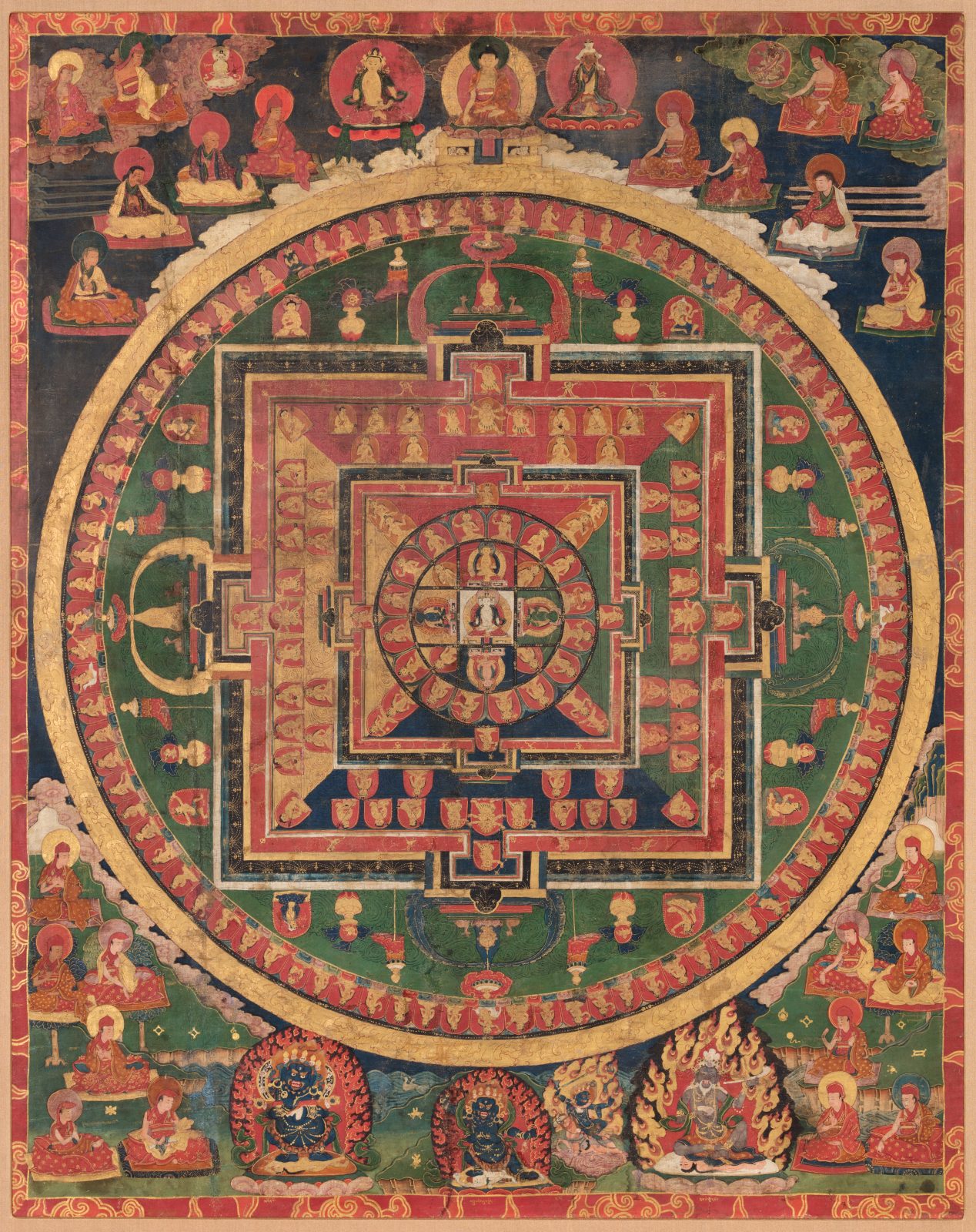
Sarvavid Vairochana Mandala; Tibet; 17th century; Pigments on cloth; Rubin Museum of Himalayan Art, Gift of Shelley and Donald Rubin; C2006.66.346

For Raveena, music is meant to be a “complete expression of the self.” It’s a truth she’s leaned on through a whirlwind couple of years, which saw a potent flurry of output and a pointed ascent into the conversation with her critically acclaimed 2019 debut full-length, Lucid, and 2020 follow-up, Moonstone EP. Asha’s Awakening takes listeners on an epic deep dive into Indian culture. An homage to her heritage as a first-generation descendant of genocide survivors and Reiki healers, the album incorporates influences from Bollywood and celebrated Indian artists like R.D. Burman and Asha Bhosle, as well as Western music—specifically R&B, rock, and soul—and melds the genres prevalent throughout Raveena’s catalog into one cohesive body of work. The album also marries eras in time, fusing together a contemporary take on sounds influenced by Alice Coltrane and Asha Puthli from the 60s and 70s with those of Timbaland, Missy Elliott, M.I.A., and Jai Paul from the early 2000s. It is a labor of love that represents her evolution as an artist. Raveena remarks, “I think it’s really fun putting people in uncomfortable positions to receive new sides of you. The human experience is so vast.”
Inspired by artists like Sade, Corinne Bailey Rae, Minnie Riperton, and Indian singer Asha Puthli, Raveena is a highly creative, dynamic, and spiritual artist who aims to build fully realized worlds within each of her projects: conceptual experimentations in sound, threaded together by stories of healing and self-realization meant to be experienced from start to finish.
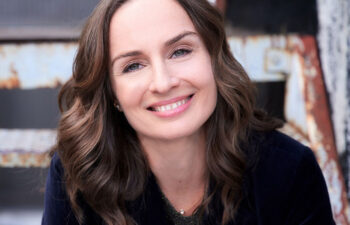
Tracy A. Dennis-Tiwary, PhD, is a professor of psychology and neuroscience at The City University of New York. As director of the Emotion Regulation Lab, she conducts NIH-funded research on anxiety, suicide, and digital therapeutics for stress and anxiety. She is the cofounder of Arcade Therapeutics, which translates cutting-edge science into digital tools for behavioral health, and co-executive director of the Center for Health Technology at Hunter College. She is the author of Future Tense: Making Anxiety Our Superpower.

A highly-regarded psychiatrist in private practice in New York City, Mark Epstein, MD, is the author of a number of books about the interface of Buddhism and psychotherapy, including Thoughts without a Thinker, Going to Pieces without Falling Apart, Going on Being, Open to Desire and Psychotherapy without the Self. The Trauma of Everyday Life uses the Buddha’s biography as a means of exploring the hidden psychodynamics, and contemporary relevance, of Buddhist thought. He received his undergraduate and medical degrees from Harvard University and is currently a clinical assistant professor in the postdoctoral program in psychotherapy and psychoanalysis at New York University.
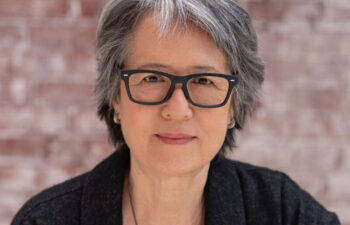
Ruth Ozeki is a novelist, filmmaker, and Zen Buddhist priest, whose books have garnered international acclaim for their ability to integrate issues of science, technology, religion, environmental politics, and global pop culture into unique, hybrid, narrative forms. Her new novel, The Book of Form and Emptiness, published by Viking in September 2021, tells the story of a young boy who, after the death of his father, starts to hear voices and finds solace in the companionship of his very own book. The Book of Form and Emptiness has been shortlisted for the UK Women’s Prize for Fiction. Her first two novels, My Year of Meats (1998) and All Over Creation(2003), have been translated into 11 languages and published in 14 countries. Her third novel, A Tale for the Time Being (2013), won the L.A. Times Book Prize, was shortlisted for the Man Booker Prize and the National Book Critics Circle Award, and has been published in over 30 countries. Her work of personal non-fiction, The Face: A Time Code (2016), was published by Restless Books as part of their groundbreaking series called The Face. Ruth’s documentary and dramatic independent films, including Halving the Bones, have been shown on PBS, at the Sundance Film Festival, and at colleges and universities across the country. A longtime Buddhist practitioner, Ruth was ordained in 2010 and is affiliated with the Brooklyn Zen Center and the Everyday Zen Foundation. She splits her time between Western Massachusetts, New York City, and British Columbia, Canada. She currently teaches creative writing at Smith College, where she is the Grace Jarcho Ross 1933 Professor of Humanities in the Department of English Language and Literature.
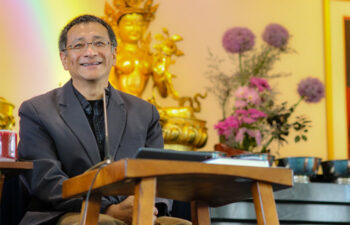
Dzogchen Ponlop Rinpoche is a widely celebrated Buddhist teacher and the author of Emotional Rescue, Rebel Buddha, and other books. A lover of music, art and urban culture, Rinpoche is a poet, photographer, accomplished calligrapher and visual artist, as well as a prolific author. Rinpoche is the founder, president, and spiritual director of Nalandabodhi, an international community of Buddhist centers. Rinpoche is acknowledged as one of the foremost scholars and meditation masters of his generation in the Nyingma and Kagyu schools of Tibetan Buddhism. He is known for his sharp intellect, humor, and easygoing teaching style, for launching the kindness initiative #GoKind and for his outreach to communities internationally.
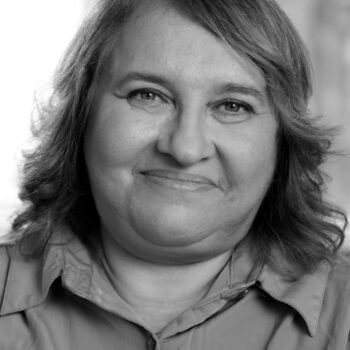
Sharon Salzberg, Cofounder of the Insight Meditation Society in Barre, Massachusetts, has guided meditation retreats worldwide since 1974. Her latest books are Real Life: The Journey from Isolation to Openness and Freedom and Finding Your Way: Meditations, Thoughts, and Wisdom for Living an Authentic Life. She is a weekly columnist for On Being, a regular contributor to the Huffington Post, and the author of several other books, including the New York Times bestseller Real Happiness: The Power of Meditation, Real Change: Mindfulness to Heal Ourselves and the World, Faith: Trusting Your Own Deepest Experience, and Lovingkindness: The Revolutionary Art of Happiness. Ms. Salzberg has been a regular participant in the Rubin’s many on-stage conversations and regards the Rubin as a supplemental office.
Get the latest news and stories from the Rubin, plus occasional information on how to support our work.